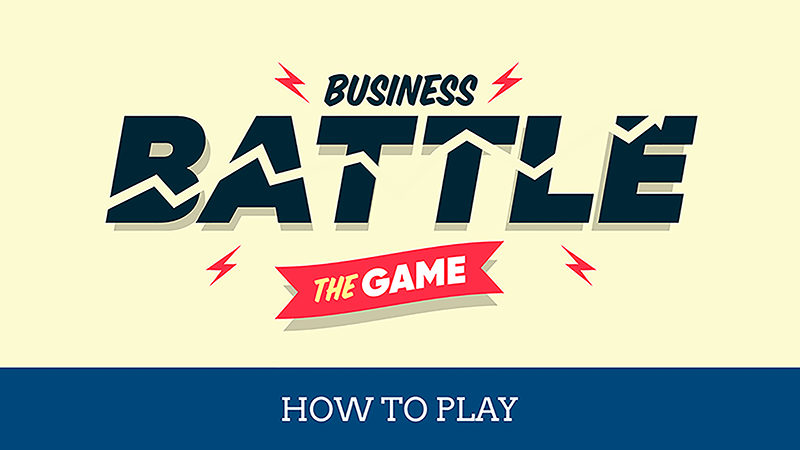Creating Interactive Content for Classrooms
CREATING INTERACTIVE CONTENT FOR CLASSROOMS
It’s surprising to imagine that some people think business is dry; the business world is bursting with drama, company CEOs are the new rock stars and creating successful ideas that sell is hugely rewarding. When we were asked by the Intellectual Property Office to create a classroom-centred learning activity to support GCSE Business Studies, we wanted to create an experience that gave students a taste of that world whilst also delivering a fundamental understanding of the curriculum, boosting business acumen and highlighting the importance of protecting their business ideas.
The way that children learn, in and out of classrooms, has dramatically changed over recent years. The proliferation of interactive learning tools in schools has transformed the way that teachers deliver their lesson plans, relying on a multitude of interactive tools to bring in dynamic content to facilitate learning. Creating educational apps, games and interactive experiences for the classroom comes with some very specific challenges and some unique considerations.
Here are some of our key learnings we’ve gained from creating Business Battle; a competitive, multiplayer, business simulation game developed for classroom teaching.

ASK TEACHERS!
Although primarily the game needs to be created for students to enjoy and learn from, it’s essential to get teachers’ input if it’s going to be successful. They will be the enablers; they will introduce it to students, facilitate content being used at school (where there is generally locked down internet usage), include it in lessons or set as homework. It needs to be an essential piece of content that is useful to teachers and aligned to key concepts of the curriculum for it to be considered. We worked with a Business Studies teacher throughout the entire process, from conception, paper prototyping and content writing to ensure the game was serving teachers from all angles.
ALLOW SPACE FOR DISCUSSION
Unlike a video (my teachers used to wheel in a great big TV and pop it on for an hour to keep us quiet and get on with their marking), interactive content must leave teachers the freedom to teach in their own way and control to talk around the subject. We realised that teachers want to drive learning in their lessons with interactives supplementing their lessons, not defining it. For Business Battle, we wanted to provide structure alongside teacher control, so they defined when to move onto the next section, creating time to add their own anecdotes, recall earlier lessons, bring students into the discussion or explain what’s happening. If our educational content isn’t malleable enough to allow their input, teachers won’t use it.
LOOK TO GAMES
At Aardman we have always believed passionately that games can deliver messages and bring about understanding in ways other media can’t. By playing, experimenting, and ‘doing’ children can start to fathom incredibly complex subjects… and not even realise they’re doing it. In Music Inc, a mobile app we made for the Intellectual Property Office and UK Music, we used big-picture simulation to make a simple model of the entire music industry, to great effect. We tried to develop that vision in Business Battle by creating a microcosm of how an actual business works and sells in the free market. A rather complex task, but in boiling down the key components into a game, it made the concept digestible for students. Game mechanics can offer a more accessible form of learning and allow unengaged students take on a new found love for the subject by presenting it in an accessible format they understand.
user test in schools
We undertook a multitude of research before we made Business Battle; what devices were used in schools? How many computers between an average class? How powerful were those computers? What browsers were they using? What versions of those browsers? Would firewalls affect our multiplayer network? Even with all the research in the bag, user testing in-situ was invaluable. No matter how many alert boxes we included that said ‘don’t click back or you’ll leave the game’, human error (or rather curious/naughty students) would always creep in and break the game. Observations like this enabled us to make essential technical adjustments which greatly improved the performance, stability and robustness of the game. What was even more interesting was observing the dynamic between teachers, students and the game; how the groups of kids worked together, how the teachers were interjecting at certain points to supplement with their own observations, which elements the students really responded to and those which had fallen flat. From these responses we honed the game, tested again in a different school, honed again and tested again and… you get the idea. The result is a more technically robust game with far superior and effective gameplay than we started out with.

USER TEST IN SCHOOLS
INSPIRE GROUP PLAY AND COMPETITION
In our research it was clear that students valued group play, being challenged by their classmates and being able to celebrate their progress. Group play is incredibly important given that in the schools we tested with, there weren’t enough computers for single students to use. For a multiplayer game this created a host of game design and visual design challenges for us to deal with, but was an essential hurdle to overcome – we created Business Battle to accommodate groups of up to 30 children. This really paid off when we observed in user testing, the students thrived on working together, deliberating, collaborating and indulging in a bit of friendly rivalry with their peers. To further drive competition we added a question rounds to earn cash points with clear visual feedback for the winners and losers, rewarding animations when points were earned and an all-important leaderboard, which animated to clearly depict if players had dropped or risen in the table. Integrating game reward systems inside interactives like achievements, badges, leaderboards and levelling up can drive competition, participation and continued interest throughout play (see above, Look to Games!).
SET THE BAR HIGH ON DESIGN
Children are exposed to an ever-increasingly rich tapestry of media outside of school; the educational content, games and apps they play have incredibly high design standards, and it’s these applications we’re in competition with. To inspire students to engage with our product we need to aim high to grab their attention. Teenagers are a notoriously difficult bunch to engage, so as developer consideration to the design, characters, tone of voice, story and gameplay need to be pitched just right; too childish/cute, or too dry/staid and they won’t relate. We can’t hope to connect with kids if we’re not making beautiful, rewarding-to-play work.
IN SUMMARY
Creating for the classroom has its specific challenges, but overcoming them can be incredibly rewarding, as we found in creating Business Battle; it has led to a unique and inspiring game that’s practical, fun, and we hope, offers genuine support for teachers to inspire the business stars of the future.

















